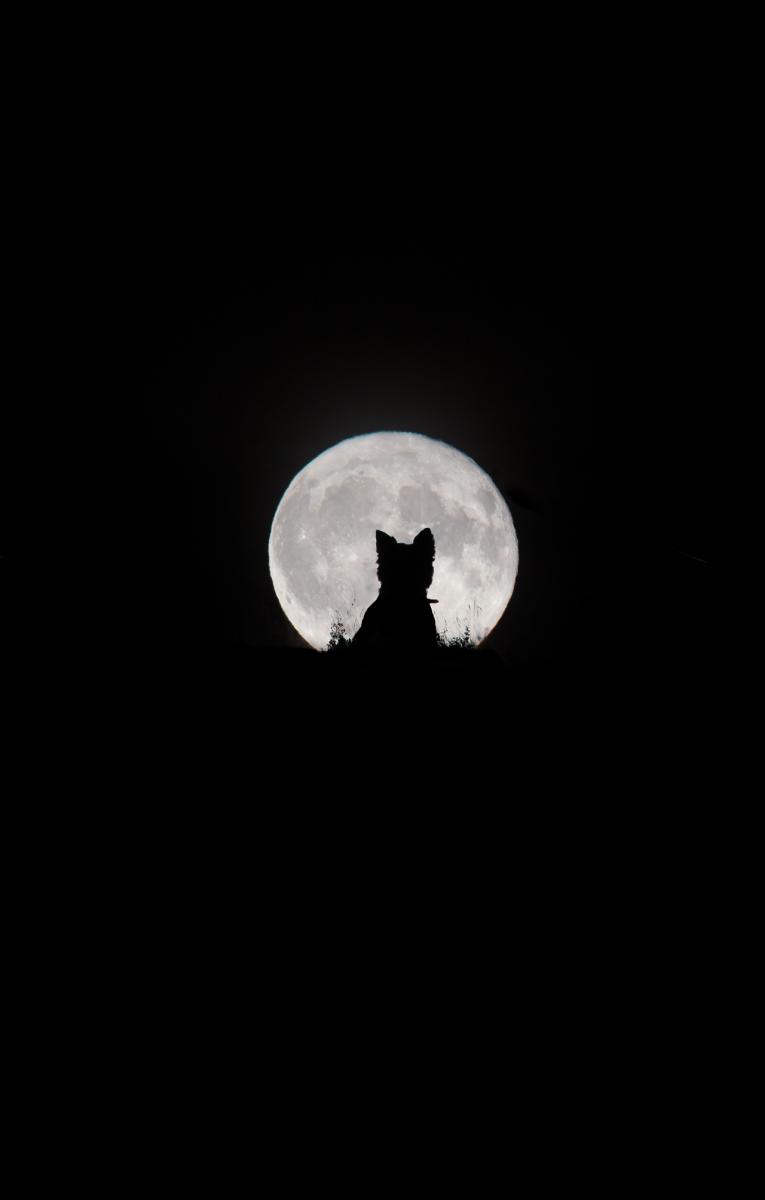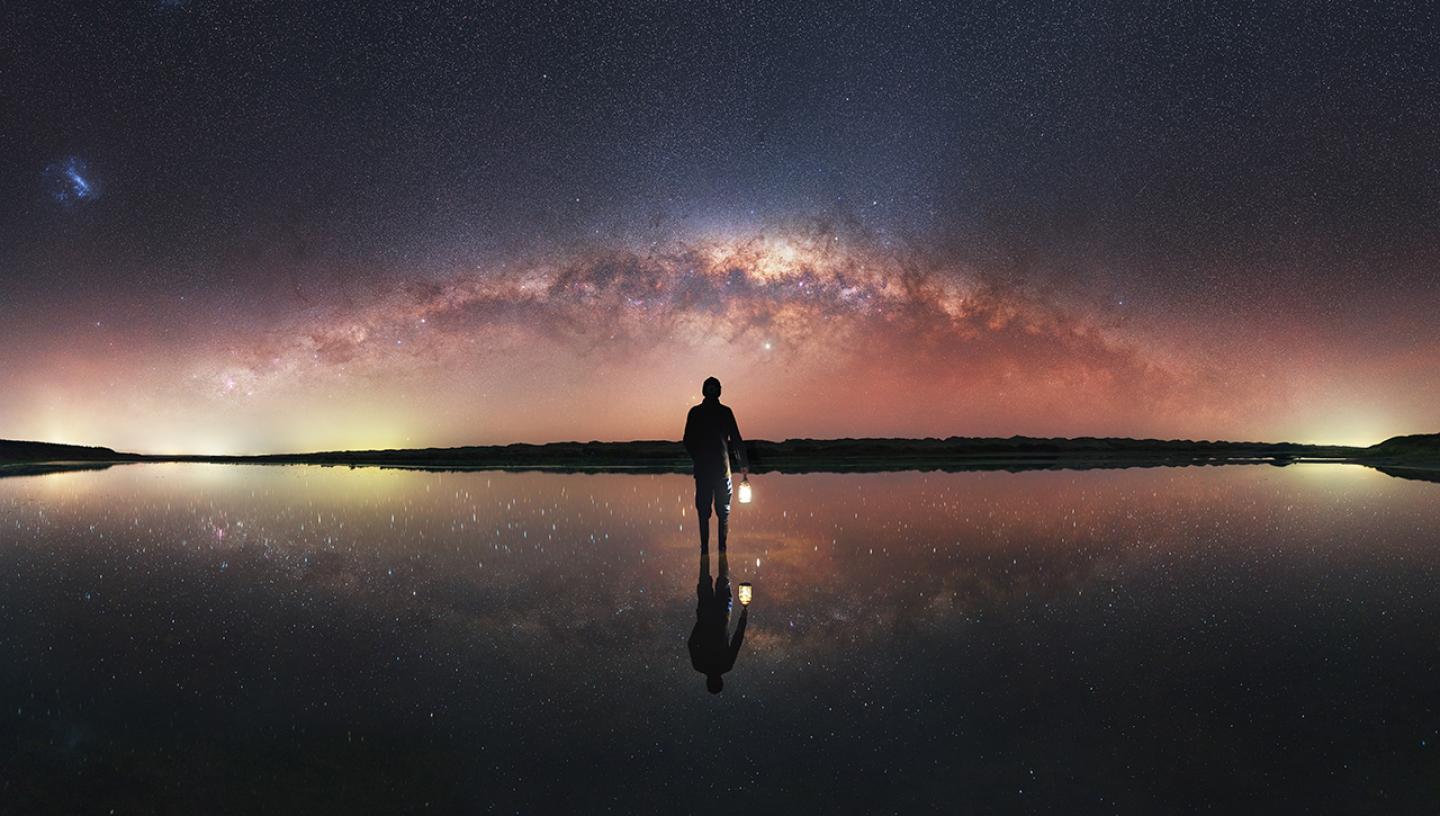
A Super Flower Moon will rise this May. It's set to be one of the largest and brightest full Moons of the year so far.
This month is set to be even more special if you live in western parts of the Americas, Australia, New Zealand or Eastern Asia. That's because a lunar eclipse is set to occur in these regions.
The eclipse could turn the Moon a distinctive reddish colour, giving moongazers the chance to see a 'blood Moon'.
If you're confused by all these names, or just want to know when to see and photograph the supermoon, read on!
We want to see your best photos of the Moon this May! Click here to upload and share your photo, or tag Royal Museums Greenwich on Instagram or Twitter with the hashtag #MySupermoon and get your shot featured online.
The best photographer will win a copy of the Insight Investment Astronomy Photographer of the Year catalogue and Moongazing: Beginner's Guide to Exploring The Moon. Five runners-up will receive a copy of Moongazing.
When can I see the Super Flower Moon?
In the UK, May's full Moon will rise on 26 May. It will technically be at its fullest at 12.13pm BST in the middle of the day, but as long as you're out after dark on the 25 or 26 May you'll be able to enjoy the Super Flower Moon in all its glory.
Now, if you happen to be watching the skies from Australia, parts of the western United States, South America or in South-East Asia, this month's supermoon also coincides with a lunar eclipse.
Over several hours, the Moon will pass through the Earth's shadow, causing it to darken and even become reddish in colour.
People sometimes refer to a lunar eclipse as a ‘blood moon’ because of the way the Moon can turn a deep coppery red. This colour is due to sunlight filtering through Earth's atmosphere; how red it actually turns depends on the state of dust in the Earth's atmosphere.
So, if you're in a part of the world where the eclipse is visible, you'll be able to say you've seen a 'Super Flower Blood Moon'. Make sure you send those of us here in the UK a photograph.
How to photograph the Moon
The basics of photographing the Moon are the same whether you're using a phone, compact camera or SLR.
Choose a location that allows an unobstructed view of the Moon for several hours, and try to set up away from buildings and other sources of light.
If you want to focus just on the Moon, you'll need a telephoto lens or telescope. These aren't necessary if you're trying for more of a landscape photograph, but just remember that if you want to include specific landmarks or features then you'll need to plan ahead for the best shot.
Find out when the Moon will rise and set, work out where in the sky you might want it to be, and pick the perfect spot to capture everything together.
You can also check out this year's shortlisted Moon photos from Insight Investment Astronomy Photographer of the Year for inspiration.

Why is it called a Super Flower Moon?
Catchy name isn't it? To understand it, we need to break it down.
First, the 'Flower' part: over time, different cultures have given different names to full moons across the lunar calendar. Many of the Moon’s nicknames in popular use today have come to us from Native American cultures.
Many cultures refer to May's full moon as the Flower Moon thanks to the abundant blooming that occurs as spring gets going properly. Other names include the hare moon, the corn planting moon, and the milk moon.
The 'super' part meanwhile tells us that this full Moon is due to be a 'supermoon', when the Moon appears up to 14 per cent bigger and 30 per cent brighter.
That's why this May's full Moon is called a Super Flower Moon: it's both a Flower Moon and a supermoon.
Why is a supermoon brighter than a normal full Moon?
The Moon’s orbit around the Earth is elliptical in shape, and this means that the distance between the Moon and the Earth varies.
The point at which the Moon is closest to the Earth during its orbit is called lunar perigee, and the point at which the Moon is farthest from the Earth is called lunar apogee.
If a full Moon occurs when the Moon is closest to the Earth, it is known as a supermoon. The Moon’s physical size won’t change, but because it will be at its closest to the Earth, it can appear up to 14% bigger and 30% brighter, so it is well worth a look.

See more great space photography
Main image: The Moon And the Shard © Mathew Browne, Insight Investment Astronomy Photographer of the Year 2020

